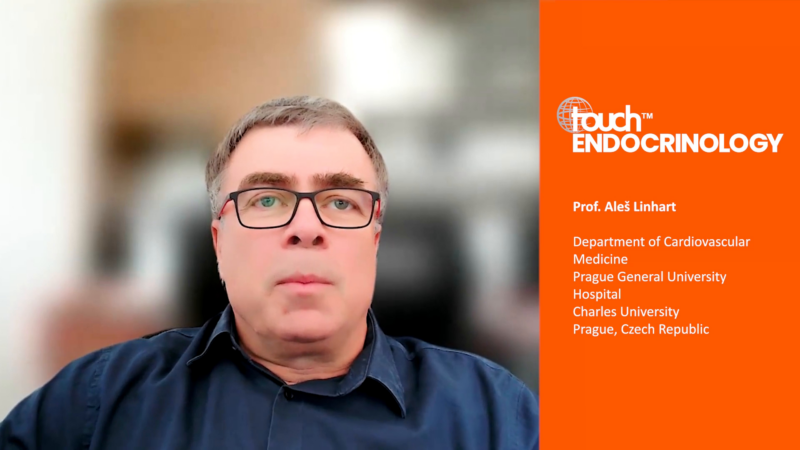touchPANEL DISCUSSION
 A visually engaging discussion designed to emulate a ‘live’ panel experience and provide clinicians with practical expert insights to address their clinical challenges. Useful tips below will show how to navigate the activity.
Close
A visually engaging discussion designed to emulate a ‘live’ panel experience and provide clinicians with practical expert insights to address their clinical challenges. Useful tips below will show how to navigate the activity.
Close
 A visually engaging discussion designed to emulate a ‘live’ panel experience and provide clinicians with practical expert insights to address their clinical challenges. Useful tips below will show how to navigate the activity.
Close
A visually engaging discussion designed to emulate a ‘live’ panel experience and provide clinicians with practical expert insights to address their clinical challenges. Useful tips below will show how to navigate the activity.
Close
Key considerations for the clinical management of rapidly progressing ADPKD
Learning Objectives
After watching this activity, participants should be better able to:
- Recognize how to predict progression in patients with autosomal dominant polycystic kidney disease (ADPKD)
- Discuss the efficacy data for the currently available and emerging pharmacological treatment options for rapidly progressing ADPKD
- Discuss how to manage key side effects when using vasopressin V2 receptor antagonists in ADPKD
Overview
In this activity, a radiologist, a nephrologist and a primary care physician discuss how to predict disease progression and prognosis in ADPKD, as well as current and emerging treatment options for rapidly progressing disease and how to manage potential
treatment-related side effects. The discussion is guided by pre-canvassed questions provided by healthcare professionals involved in the management of patients with ADPKD.
This activity is jointly provided by USF Health and touchIME. read more
Target Audience
This activity has been designed to meet the educational needs of endocrinologists, nephrologists, renal pharmacists, primary care physicians and radiologists involved in the management of ADPKD.
Disclosures
USF Health adheres to the Standards for Integrity and Independence in Accredited Continuing Education. All individuals in a position to influence content have disclosed to USF Health any financial relationship with an ineligible organization. USF Health has reviewed and mitigated all relevant financial relationships related to the content of the activity. The relevant relationships are listed below. All individuals not listed have no relevant financial relationships.
Faculty
Prof. Bradley Erickson has no interests/relationships or affiliations to disclose in relation to
this activity.
Prof. Neera Dahl discloses: Advisory board or panel fees from Natera. Consultancy fees from Otsuka and Vertex. Grants/research support from Reata Pharmaceuticals. Speaker’s bureau fees from Otsuka.
Prof. Charles Vega discloses: Consultancy fees from Boehringer Ingelheim, GlaxosmithKline and Johnson & Johnson.
Content reviewer
Kevin Cowart, PharmD, MPH, BCACP, CDCES has no financial interests/relationships or affiliations in relation to this activity.
Touch Medical Director
Katrina Lester has no financial interests/relationships or affiliations in relation to this activity.
USF Health Office of Continuing Professional Development and touchIME staff have no financial interests/relationships or affiliations in relation to this activity.
Requirements for Successful Completion
In order to receive credit for this activity, participants must review the content and complete the post-test and evaluation form. Statements of credit are awarded upon successful completion of the post-test and evaluation form.
If you have questions regarding credit please contact cpdsupport@usf.edu
Accreditations
Physicians
This activity has been planned and implemented in accordance with the accreditation requirements and policies of the Accreditation Council for Continuing Medical Education (ACCME) through a joint providership of USF Health and touchIME. USF Health is accredited by the ACCME to provide continuing medical education for physicians.
USF Health designates this enduring material for a maximum of 0.75 AMA PRA Category 1 CreditTM. Physicians should claim only the credit commensurate with the extent of their participation in the activity.
The European Union of Medical Specialists (UEMS) – European Accreditation Council for Continuing Medical Education (EACCME) has an agreement of mutual recognition of continuing medical education (CME) credit with the American Medical Association (AMA). European physicians interested in converting AMA PRA Category 1 CreditTM into European CME credit (ECMEC) should contact the UEMS (www.uems.eu)
Advanced Practice Providers
Physician Assistants may claim a maximum of 0.75 Category 1 credits for completing this activity. NCCPA accepts AMA PRA Category 1 CreditTM from organizations accredited by ACCME or a recognized state medical society.
The AANPCP accepts certificates of participation for educational activities approved for AMA PRA Category 1 CreditTM by ACCME-accredited providers. APRNs who participate will receive a certificate of completion commensurate with the extent of their participation.
Pharmacists
USF Health is accredited by the Accreditation Council for Pharmacy Education as a provider of continuing pharmacy education. This knowledge-based program has been approved for 0.75 contact hours (0.75 CEUs). Universal program number is as follows: 0230-9999-23-004-H01-P.
Date of original release: 29 March 2023. Date credits expire: 29 March 2024.
If you have any questions regarding credit please contact cpdsupport@usf.edu
To obtain contact hours from this activity, please complete this post-activity test.
Claim CreditYou may also be interested in...

REGISTER NOW FOR FREE ACCESS TO
- 1000+ topical and insightful peer-reviewed journal articles
- 100+ hours of bite-sized congress highlights
- 8 major therapy areas packed with the latest scientific advances
- 150+ specialties offering learn-on-the-go medical education
- + Concise email updates and newsletters so you never miss out

Log into your Touch Account
Earn and track your CME credits on the go, save articles for later, and follow the latest congress coverage.
Sign up with an Email
Or use a .
This Functionality is for
Members Only
Explore the latest in medical education and stay current in your field. Create a free account to track your learning.




















